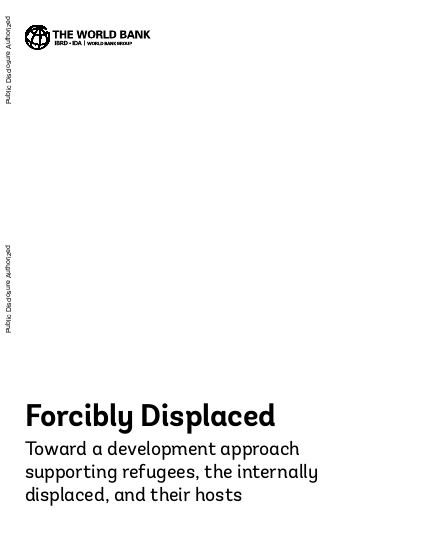
Forced displacement is a crisis centered in developing countries, which host 89 percent of refugees and 99 percent of internally displaced persons, says a new World Bank report. At its root are the same 10 conflicts which have accounted for the majority of the forcibly displaced every year since 1991, consistently hosted by about 15 countries – also overwhelmingly in the developing world.
“Forcibly Displaced — Toward a development approach supporting refugees, the internally displaced, and their hosts” is a groundbreaking study conducted in partnership with the United Nations High Commissioner for Refugees (UNHCR), which examines the role of development in resolving the challenge of forced displacement. It responds to the growing need to better manage these crises as an important development challenge, part of an overall effort to reduce poverty and achieve the Sustainable Development Goals. The aim of development support is to address the longer term, social and economic dimensions of displacement, in close collaboration with humanitarian and other partners working in complementary ways.
While the current crisis is severe—with a reported 65 million people living in forced displacement – the report finds that over the past 25 years, the majority of both refugees and Internally Displaced Persons under UNHCR’s mandate can be traced to just a few conflicts in the following areas: Afghanistan, Iraq, Syria, Burundi, the Democratic Republic of Congo, Somalia, Sudan, Colombia, the Caucasus and the former Yugoslavia.
Since people typically flee to neighbors of their countries of origin, the responsibility of hosting has not been shared evenly. About 15 countries have consistently been hosting the majority of refugees. At the end of 2015, Turkey, Lebanon, and Jordan, Syria’s neighbors, hosted 27 % of all refugees worldwide; Pakistan and Iran, Afghanistan’s neighbors, hosted 16 %; and Ethiopia and Kenya, Somalia and South Sudan's neighbors, hosted 7%.